- Home
- Quizzes
- My Quiz Activity
- Newsletters
- Sports Betting
- MY FAVORITES
- Add Sports/Teams
- SPORTS
-
NFL
- NFL Home
- Arizona Cardinals
- Atlanta Falcons
- Baltimore Ravens
- Buffalo Bills
- Carolina Panthers
- Chicago Bears
- Cincinnati Bengals
- Cleveland Browns
- Dallas Cowboys
- Denver Broncos
- Detroit Lions
- Green Bay Packers
- Houston Texans
- Indianapolis Colts
- Jacksonville Jaguars
- Kansas City Chiefs
- Las Vegas Raiders
- Los Angeles Chargers
- Los Angeles Rams
- Miami Dolphins
- Minnesota Vikings
- New England Patriots
- New Orleans Saints
- New York Jets
- New York Giants
- Philadelphia Eagles
- Pittsburgh Steelers
- San Francisco 49ers
- Seattle Seahawks
- Tampa Bay Buccaneers
- Tennessee Titans
- Washington Commanders
-
MLB
- MLB Home
- Arizona Diamondbacks
- Atlanta Braves
- Baltimore Orioles
- Boston Red Sox
- Chicago White Sox
- Chicago Cubs
- Cincinnati Reds
- Cleveland Guardians
- Colorado Rockies
- Detroit Tigers
- Houston Astros
- Kansas City Royals
- Los Angeles Angels
- Los Angeles Dodgers
- Miami Marlins
- Milwaukee Brewers
- Minnesota Twins
- New York Yankees
- New York Mets
- Oakland Athletics
- Philadelphia Phillies
- Pittsburgh Pirates
- San Diego Padres
- San Francisco Giants
- Seattle Mariners
- St. Louis Cardinals
- Tampa Bay Rays
- Texas Rangers
- Toronto Blue Jays
- Washington Nationals
-
NBA
- NBA Home
- Atlanta Hawks
- Boston Celtics
- Brooklyn Nets
- Charlotte Hornets
- Chicago Bulls
- Cleveland Cavaliers
- Dallas Mavericks
- Denver Nuggets
- Detroit Pistons
- Golden State Warriors
- Houston Rockets
- Indiana Pacers
- Los Angeles Clippers
- Los Angeles Lakers
- Memphis Grizzlies
- Miami Heat
- Milwaukee Bucks
- Minnesota Timberwolves
- New Orleans Pelicans
- New York Knicks
- Oklahoma City Thunder
- Orlando Magic
- Philadelphia 76ers
- Phoenix Suns
- Portland Trail Blazers
- Sacramento Kings
- San Antonio Spurs
- Toronto Raptors
- Utah Jazz
- Washington Wizards
-
NHL
- NHL Home
- Anaheim Ducks
- Arizona Coyotes
- Boston Bruins
- Buffalo Sabres
- Calgary Flames
- Carolina Hurricanes
- Chicago Blackhawks
- Colorado Avalanche
- Columbus Blue Jackets
- Dallas Stars
- Detroit Red Wings
- Edmonton Oilers
- Florida Panthers
- Los Angeles Kings
- Minnesota Wild
- Montreal Canadiens
- Nashville Predators
- New Jersey Devils
- New York Islanders
- New York Rangers
- Ottawa Senators
- Philadelphia Flyers
- Pittsburgh Penguins
- San Jose Sharks
- Seattle Kraken
- St. Louis Blues
- Tampa Bay Lightning
- Toronto Maple Leafs
- Vancouver Canucks
- Vegas Golden Knights
- Washington Capitals
- Winnipeg Jets
- NCAAF
- NCAAM
- Boxing
- Entertainment
- Lifestyle
- Golf
- MMA
- Soccer
- Tennis
- Wrestling
- More Sports
- RESOURCES
- My Account
- YB on Facebook
- YB on Twitter
- YB on Flipboard
- Contact Us
- Privacy Policy
- Terms of Service
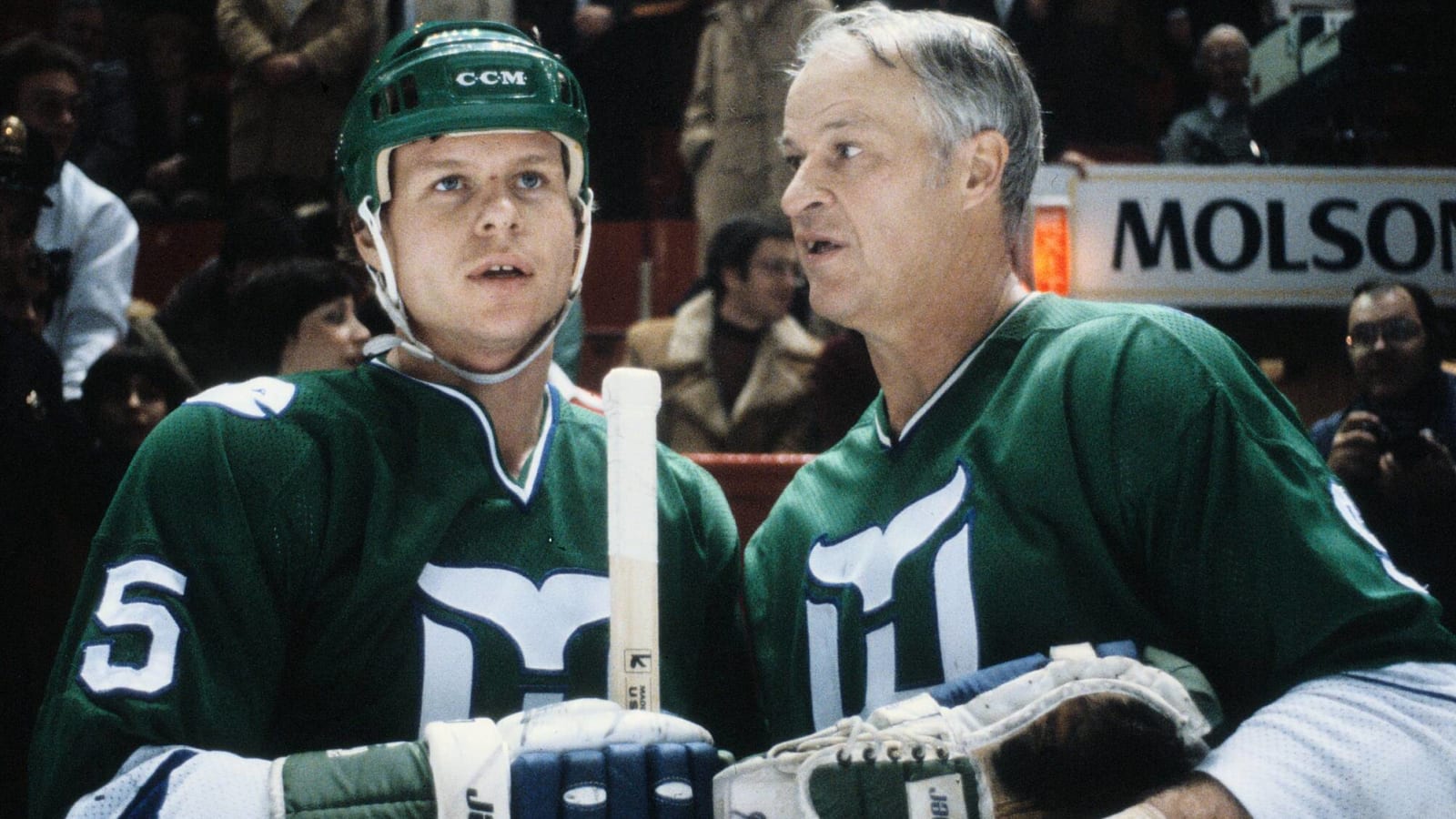
The most memorable defunct NHL teams
In the rich, storied history of the National Hockey League, there have been plenty of memorable teams to grace the ice. Especially those who no longer exist. Here are the prominent defunct NHL teams (not necessarily franchises) that no true hockey fan should forget.
Listed in alphabetical order.
Atlanta Flames (1972-73-1979-80)

The first try at hockey in "Hotlanta," the initial version of the Flames actually made the playoffs in six of their eight seasons in town. Calder Trophy winners Eric Vail and Willi Plett, plus 1980 United States Olympic hero Jim Craig, were some of the most noteworthy players to don the Atlanta Flames sweater. However, these Flames went just 2-15 in the postseason, and after average attendance peaked at a little more than 14,000 during their second season, the Atlanta Flames struggled to draw 10,000 fans per game by the end of the decade. That stagnant play and attendance ultimately led to the franchise being sold to a group out of Calgary, for a then-NHL-record $16 million in May 1980. The Flames still call Calgary home.
Atlanta Thrashers (1999-2000-2010-11)
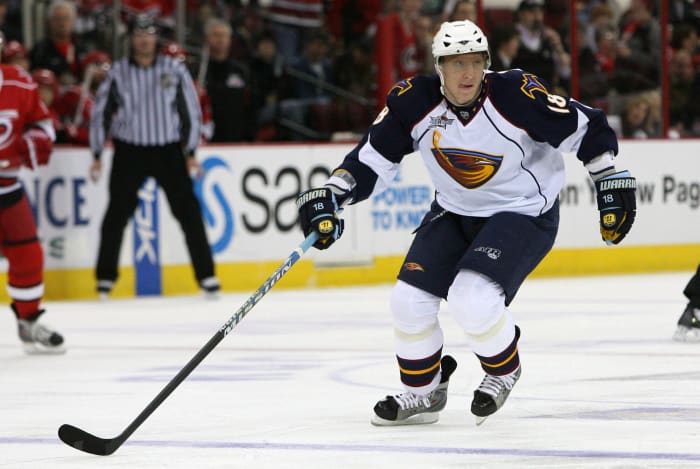
The second attempt at an NHL venture in Atlanta lasted slightly longer than the first one. During that run of 11 official seasons, the Thrashers made just one playoff appearance. That came when Marian Hossa (100 points), Ilya Kovalchuk (42 goals) and Kari Lehtonen (2.79 goals against average) led the club to 43 victories and a Southeast Division title. However, the Thrashers were swept by the New York Rangers in their first-round playoff series. Financial problems and deficits eventually led to the franchise being sold and relocated to Winnipeg prior to the 2011-12 campaign, thus ushering in the second installment of the Winnipeg Jets.
California Golden Seals (1967-68-1975-76)
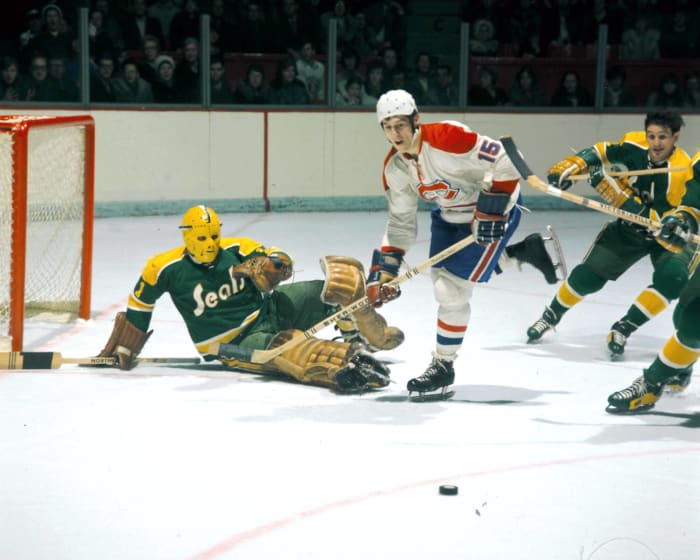
Before the San Jose Sharks made NHL hockey a staple in the Bay Area, there were the Golden Seals. Also known as the California Seals, Oakland Seals or Bay Area Seals, the franchise was part of the NHL's expansion of 1967, but lasted only nine seasons. Even with the likes of prominent stars Al MacAdam and Gilles Meloche, and late ownership by the flamboyant Charlie Finley, the Golden Seals were inconsistent on the ice (no winning seasons, two playoff appearances) and in terms of attendance. Following the 1975-76 season, when the Seals managed to win at least 20 games for the first time since '71-'72, the franchise was sold and moved to Cleveland — where, as we'll see, things were even worse.
Cleveland Barons (1976-77-1977-78)
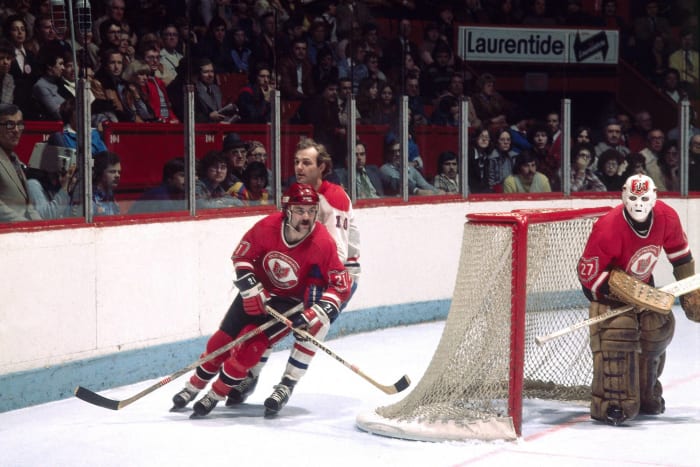
When the aforementioned Golden Seals moved out of their Oakland home, the franchise landed in Cleveland, and the move seemed doomed from the get-go. The move wasn't finalized until August 1976, just months before the start of the season. On the ice, the Barons, guided by Stanley Cup-winning coach Jack Evans, went 47-87-28 and averaged between 5,000-6,000 fans during its two seasons before ceasing operations. Rather than fold completely, the Barons merged with the Minnesota North Stars, another struggling franchise at the time.
Colorado Rockies (1976-77-1981-82)
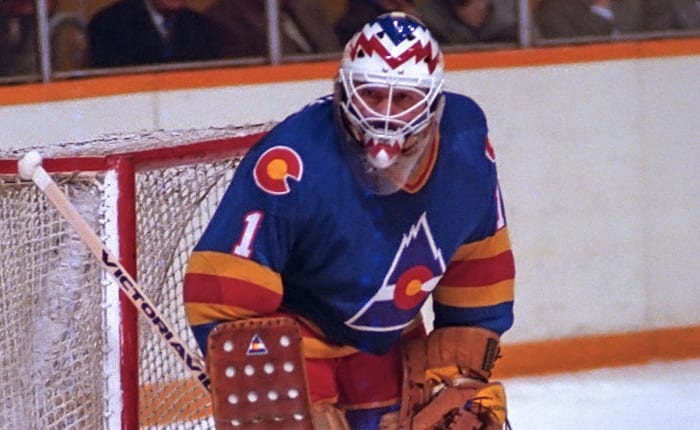
After two seasons playing in Kansas City, the franchise known as the Scouts headed further west to Denver, where the Colorado Rockies were born. However, the Rockies' lifespan was relatively short — six seasons to be exact. And even with the likes of star rookie Bred Beck, the venerable Lanny McDonald, netminder Chico Resch and over-the-top, outspoken head coach Don Cherry, Colorado never won more than 22 games in a season and generated just one playoff appearance. A poorly negotiated contract with the club's home McNichols Arena also played a part in the franchise's inability to stay in Denver, even though the NHL claimed to want a team to remain in the city. After various failed deals, owner Jack Vickers and his group eventually sold the club to New Jersey shipping tycoon and then-Houston Astros owner John McMullen, who moved it to the Meadowlands — renaming the franchise the New Jersey Devils.
Hamilton Tigers (1920-21-1924-25)
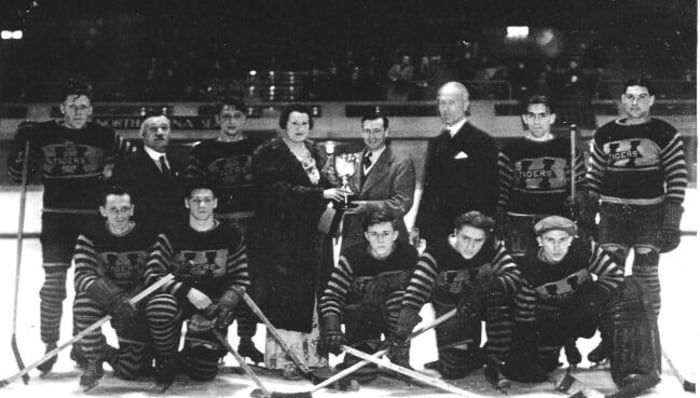
Not to be confused with the Hamilton Tiger-Cats CFL team, these hockey Tigers resided in the gritty Ontario town during the first half of the 1920s. The roots of the club go back to the Quebec Bulldogs, but on-ice struggles plagued the Tigers in Hamilton. The team never won more than nine games in each of its first five seasons, then went 19-10-1 in '24-'25 to finish first during the regular season. However, disgruntled Tigers forced the NHL's first players' strike prior to the playoffs. That proved to be the end of Hamilton's NHL team, which was suspended from the league, and a bevy of its players eventually became part of the expansion New York Americans.
Hartford Whalers (1979-80-1996-97)

Hartford, the Whale. When it comes to NHL nostalgia, the Whalers tend to still hold a special place in the hearts of hockey fans. The franchise began in Boston while in the World Hockey Association (WHA) before moving to Hartford. Following the WHA-NHL merger, the Whalers lasted 18 years in the latter. Gordie Howe, Ron Francis, Rick Ley and Brendan Shanahan were just a few of the marquee names to star for the Whalers, who made seven playoff appearances. However, they won just one postseason series, and by the mid-1990s the team was sold to a group led by Compuware CEO Peter Karmanos, The intent was to keep the Whalers in Hartford, but attendance continued to lag, there was no real corporate presence invested in the franchise and issues when it came to financial terms on a new arena. Thus, these issues led to the franchise's move to Raleigh.
Kansas City Scouts (1974-75-1975-76)
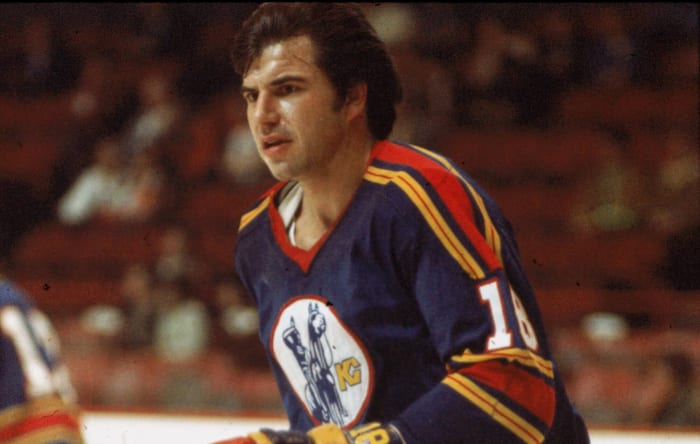
We touched on the Scouts as the origin of the franchise that also played in Colorado and currently in New Jersey. The NHL history of the Scouts is dismal and brief. Spanning its two NHL seasons, the Scouts went 27-110-23 for a total of 77 points. They allowed almost 700 goals during their Kansas City stay, and averaged slightly more than 8,000 fans amid the tenure. That poor play, weak attendance showing and almost-unaffordable, high-priced talent all played a part in the team's sale and subsequent move to Denver.
Minnesota North Stars (1967-68-1992-93)

For hockey fans of a certain age, the North Stars were a grind-it-out, blue-collar franchise that built a heated rivalry with the Chicago Blackhawks, and produced some of the game's most noteworthy stars in Bobby Smith, Dino Ciccarelli and Mike Modano. The team received new life upon its merger with the aforementioned Cleveland Barons, and made 17 playoff appearances while in Minnesota, including two trips to the Stanley Cup Final. However, wavering attendance, poor financial decisions and the consistent drama involving owner Norm Green were just a few reasons for the team's move from Minnesota to Dallas. It was a stunning circumstance considering the state's passion for hockey. However, the NHL would eventually return to the "State of Hockey" in 2000, via the Minnesota Wild.
Montreal Maroons (1924-25-1937-38)
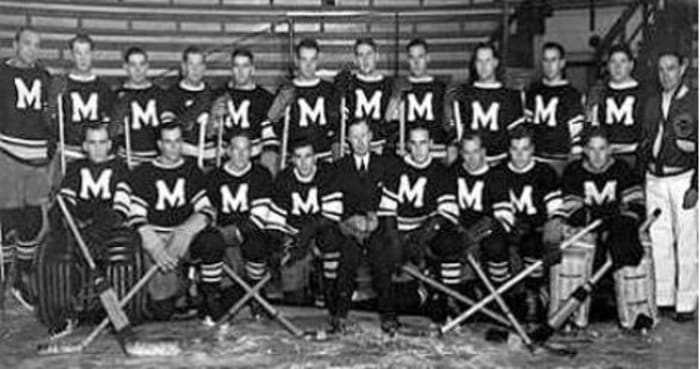
Yes, for those not in the know, the Canadiens were not the only game in town when it came to NHL action in Montreal. When it came to the Maroons, the franchise was intended to cater to the English-speaking population of Montreal (as an alternative to the French-speaking allegiance of the Canadiens). However, both teams would be under the same ownership, and shared the famed Montreal Forum, though the Maroons were the initial tenants. The Maroons were a successful franchise for the most part, winning the Stanley Cup in 1926 and '35, and making 11 playoff appearances. NHL greats like Clint Benedict, Toe Blake and King Clancy played for the Maroons, who lasted until it was unable to recover financially from the Great Depression.
Montreal Wanderers (1917-18)
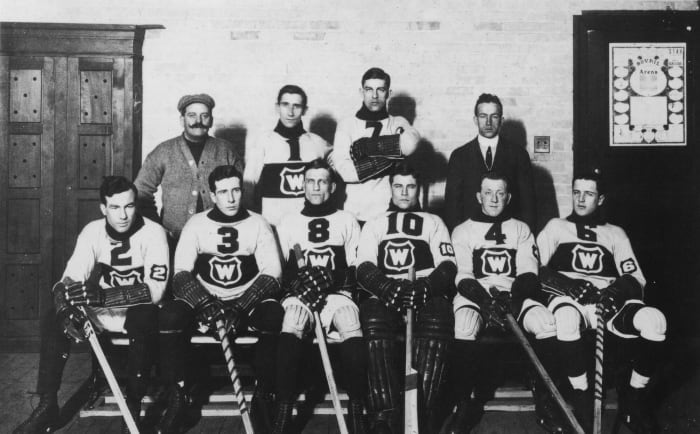
In the shadows of the Canadiens and Maroons in Montreal are the Wanderers. Likely forgotten, the Wanderers' stay in the NHL lasted all of six official games — four actually decided on the ice — and two forfeits. When the National Hockey Association (NHA) was suspended, the Wanderers were part of the new NHL. However, despite winning multiple Stanley Cup Finals prior to the creation of the NHL, the Wanderers were struggling to be competitive by 1917-18. Then, when their home at Montreal Arena burned down, ownership opted to suspend the franchise.
New York/Brooklyn Americans (1925-26-1941-42)
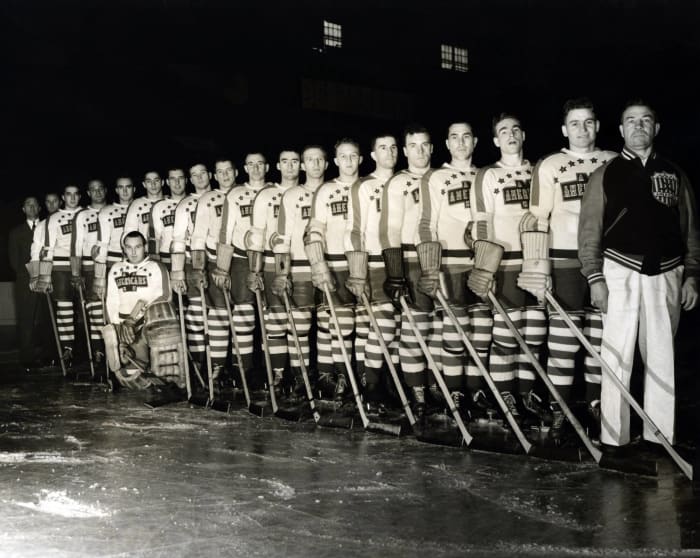
After absorbing players from the aforementioned Hamilton Tigers, New York City's first NHL team was born. For 17 seasons, the Americans represented the Big Apple. But even with the likes of Hall of Famers Harry Oliver and Red Dutton in tow, the Americans made just five playoff appearances and won only two postseason series while playing at Madison Square Garden. Consistent financial struggles and World War II ultimately led to the end of the franchise, which played its final '41-'42 season known as the Brooklyn Americans. This occurred during a time when ownership threatened to move the club to Brooklyn, even though there was no arena to host.
Ottawa Senators (1917-18-1933-34)

Not to be confused with the current incarnation of the Ottawa Senators hockey club, these Senators were a founding member of the NHL. Even before its NHL run, Ottawa was a successful Canadian hockey franchise. During its time as part of the NHL, the Senators won four Stanley Cups and were associated with such legendary hockey names as King Clancy and Syd Howe. However, the usual financial issues that doomed many of the professional sports teams located in smaller cities around the time of the Great Depression led to the Senators' relocation to St. Louis.
Philadelphia Quakers (1930-31)
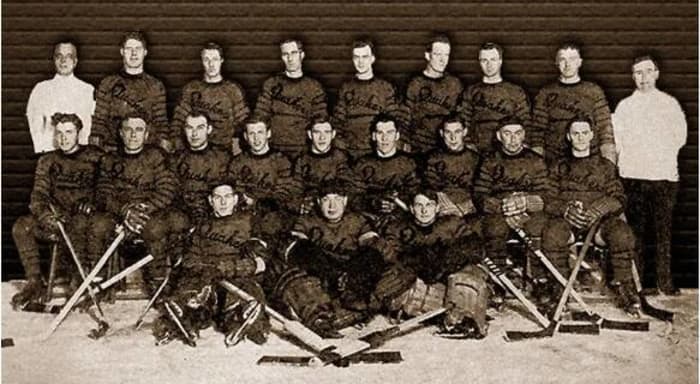
The 1930-31 season proved to be the entire existence of the Philadelphia Quakers. The franchise actually got its start in Pittsburgh (more on that in a bit), but was temporarily moved to Philly while the Steel City could build a new arena that was better suited for hockey. However, things actually got worse for the franchise in Philadelphia, going 4-36-4 during that lone season in town, while continuing to bleed money and ultimately leading to the end of the organization. There would not be hockey in Philadelphia until the Flyers took the ice in 1967.
Pittsburgh Pirates (1925-26-1929-30)

No, we're not talking baseball. There was a NHL hockey team in Pittsburgh that happened to have the same name as the baseball club. However, the Pirates, on the ice, won just 67 games in five seasons as a member of the NHL and essentially got worse each year going forward. Financial struggles and perhaps the more-pressing need for a proper arena were key reasons the ownership moved to Philadelphia while trying to get things together to build said stadium. However, as noted, the team played worse in Philly, and the hockey Pirates never returned to Pittsburgh. Thankfully for hockey fans in town, the Penguins have given them plenty to celebrate.
Quebec Bulldogs (1919-20)

The history of this Quebec franchise (officially recognized as the Quebec Hockey Club and then Quebec Athletic Club) dates back to the 1880s. After being a part of various Canadian leagues, the Bulldogs won a pair of Stanley Cups in the National Hockey Association, a precursor to the NHL. Though Quebec was one of the NHL's four founding members in 1917, financial issues and other circumstances prevented the franchise from playing in the lead, and even led to its suspension, before reforming as an expansion club and winning just four games, despite 39 goals from Joe Malone, during its lone 1919-20 campaign. The NHL then sold the franchise, which was moved to Hamilton.
Quebec Nordiques (1979-80-1994-95)
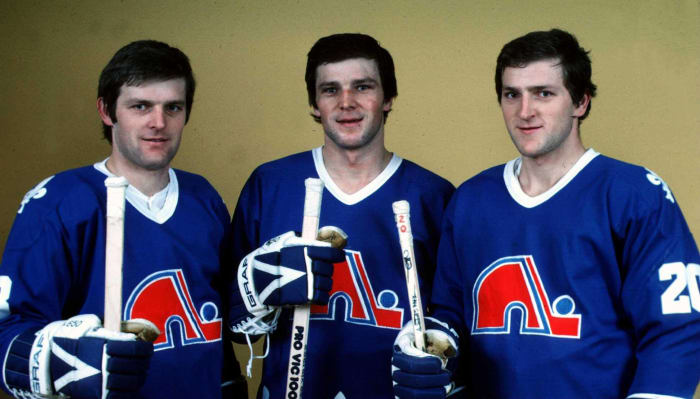
Michel Goulet, Dale Hunter, the Stastny brothers. Just some of the legends to sport the famed Nordiques sweater. With these stars helping the cause, the Nordiques won nearly 500 games and made nine playoff appearances during its 16 seasons. However, beautiful Quebec City was always the club's downfall. Predominantly French-speaking, the city was not all that endearing to non-French speaking players and it was the smallest market of any NHL city. Thus financial concerns, even amid the team's success, led to its move to Colorado, where the current-day Avalanche has won three Stanley Cups.
St. Louis Eagles (1934-35)
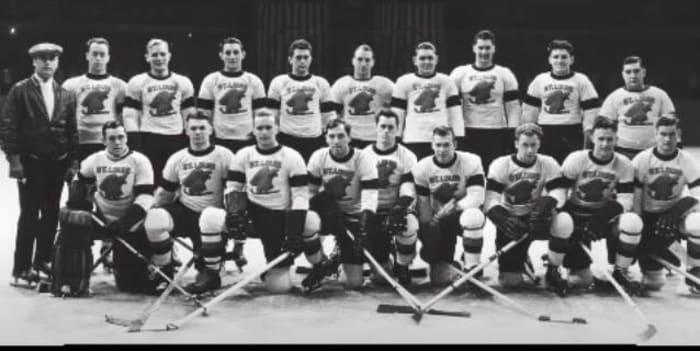
When the aforementioned Ottawa Senators decided to relocate to St. Louis, the belief was to prove more financially viable in a larger United States city. However, that plan never came to fruition as the existence of the St. Louis Eagles lasted just one season. In that 1934-35 season they went 11-31-6 to finish last in the Canadian Division, and continue to lose money — notably because of increased travel expenses. Eventually, the NHL bought out the franchise and the club's players were distributed to other NHL teams.
Toronto St. Patricks (1919-20-1926-27)
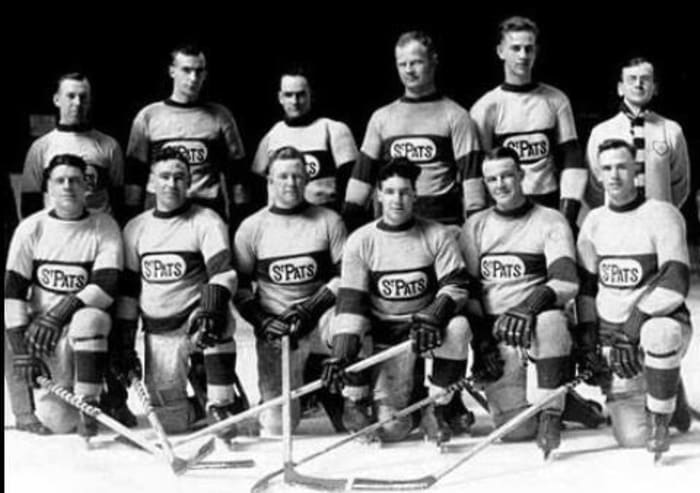
In NHL terms, this was the start of the Toronto Maple Leafs. The St. Patricks, also known as the Toronto Blueshirts and Toronto Arenas, spent eight seasons in the NHL, and are arguably the most successful version of the franchise leading up to the debut of the legendary Maple Leafs. They won the Stanley Cup in 1921-22. But, like nearly every other team on this list, financial issues plagued the franchise in the mid-to-late 1920s, when it was sold to Conn Smythe. He promptly changed the name to the Toronto Maple Leafs.
Winnipeg Jets (1979-80-1995-96)

Before the current version of the original Winnipeg Jets franchise moved to the desert in Arizona, it was an NHL staple. Part of the WHA-NHL merger, the Jets — who employed Bobby Hull during their WHA days — made the playoffs 11 times while a member of the NHL. Paced by marquee names like Dale Hawerchuk, Thomas Steen and Paul MacLean, the Jets enjoyed various levels of NHL success but never reached the conference finals. Meanwhile the usual financial issues, rising player salaries and monetary status that plagued small-market, Canadian NHL clubs during the early 1990s all led to the Jets' relocation. However, NHL hockey did return to Winnipeg, in the second coming of the Jets as an expansion club in 1999.
A Chicago native, Jeff Mezydlo has professionally written about sports, entertainment and pop culture for nearly 30 years. If he could do it again, he'd attend Degrassi Junior High, Ampipe High and Grand Lakes University.
More must-reads:
- Every Calder Trophy winner from the NHL expansion era
- Which defunct sports teams had the best uniforms?
- The '100 catches in an NFL season' quiz
Breaking News
Customize Your Newsletter
 +
+
Get the latest news and rumors, customized to your favorite sports and teams. Emailed daily. Always free!
Use of this website (including any and all parts and
components) constitutes your acceptance of these
Terms of Service and Privacy Policy.

